Why the Pizza Oven is So Hard to Clean?
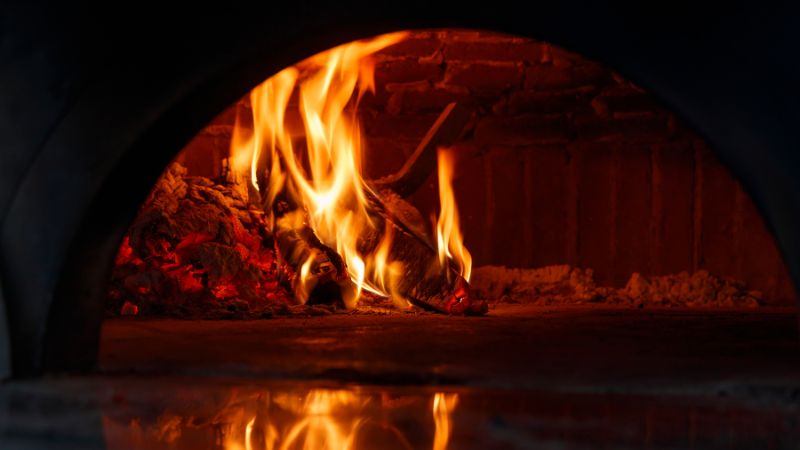
This article delves into the reasons behind the cleaning challenges posed by pizza ovens. Understanding these cleaning hurdles is the first step toward maintaining a hygienic and efficient cooking environment for your next pizza.
When you start cleaning your ovens, you should know what type of ovens you are using right now.
Wood fired ovens use burning wood to create high heat and a smoky flavor. Gas ovens use natural gas or propane as a fuel source to generate heat for baking.
Electric ovens use electrical heating elements, typically located at the top and bottom of the oven cavity, to produce heat. They are common in homes and small restaurants. Brick ovens are traditional and retain heat well. Portable pizza ovens are great for outdoor cooking and parties. Each type has its own benefits and cooking style.
Where are the Most Likely Components of a Pizza Oven to Get Stained?

Although there are many types of pizza ovens, they all have some basic components that may be easier to get stained.
The cooking surface (pizza stone or floor) is prone to food residue, grease, and burnt-on stains from cheese drippings and other toppings. Moreover, the door and surrounding areas always collect soot and food particles over time.
For wood-fired ovens, due to incomplete combustion, the interior walls, hopper, and dome are the surfaces that can easily accumulate soot stains, and the creosote always builds up in the chimney and flue, leading to sticky, tar-like stains.
For stainless steel ovens, the outer surfaces can show fingerprints, grease marks, and general staining from use and environmental factors.
Why Pizza Ovens is So Hard to Clean?
Pizza ovens are tricky to clean due to their unique design and intense cooking conditions. The high heat and food residues create stubborn messes that require special care.
High Heat Retention
Pizza ovens hold onto heat for a long time after use. Cleaning right away is dangerous and impractical. You have to wait hours for the oven to cool down before you can start cleaning. Even then, the surface may still be warm.
The intense heat bakes on food and grease, forming tough layers. These layers get harder to remove the longer they sit. The high temps also cause materials to expand and contract. This can create tiny cracks where grime builds up.
Food Residue and Grease
Pizza toppings, cheese, and oils splatter and drip during cooking, creating a mess of burned-on food bits and grease. The high heat turns this into a stubborn, carbonized crust.
Flour from the pizza dough also burns and sticks to surfaces. It mixes with grease to form a paste-like coating. This coating is hard to see and clean inside the oven but builds up over time.
Many pizza ovens, especially brick or stone ovens, have porous cooking surfaces that can absorb grease and food particles, making them harder to clean thoroughly.
Grease can also drip down into hard-to-reach spots. You might need special tools to clean corners and crevices.
How to Clean My Pizza Oven?
Proper Scrubbing Methods
Start by letting the oven cool completely. Remove any loose ash or debris with a brush. For stuck-on grime, use a non-abrasive scrub brush or sponge. Avoid steel wool or harsh scourers that could damage the oven surface.
One cleaning tip you shouldn't forget is to avoid using water to cool a hot oven cause the sudden temperature change can damage it.
Work in small sections, scrubbing in circular motions. Pay extra attention to greasy spots. For hard-to-reach areas, try a long-handled brush.
Wipe away loosened dirt with a damp cloth. Dry the oven thoroughly with a microfiber towel to prevent rust.
Suitable Cleaning Agents
Natural cleaners are gentler on your oven. A mixture of warm water and mild dish soap works well for most cleaning jobs. To scrub tough spots, you can mix baking soda and water to make a paste. Let it sit for 15 minutes before scrubbing, which can make your work easier.
White vinegar is better when you need to cut through grease. Lemon juice always works for lighter cleaning.
Chemical cleaners are stronger but harsher. Oven-specific cleaners, designed for high heat, are a popular choice because they act effectively on tough stains. However, remember to follow the instructions on the label.
Always rinse cleaning agents thoroughly, and run the oven for an hour after cleaning to burn off any leftover cleaner.
Tools Used in Cleaning Pizza Ovens

Here's a list of the different tools used to clean various parts of a pizza oven. The tools needed may vary depending on the type of pizza oven and its construction materials.
|
Tool |
Purpose |
Used For |
|
Stiff-bristled oven brush (brass/natural fibers) |
Remove baked-on residue |
Cooking surface |
|
Scraper |
Tackle stubborn debris |
Cooking surface |
|
Long-handled heat-resistant brush |
Clean hard-to-reach areas |
Interior walls and dome |
|
Chimney brush |
Remove creosote buildup |
Flue (wood-fired ovens) |
|
Soft cloth and mild cleaning solution |
Clean exterior surfaces |
Oven exterior |
|
Pizza stone brush |
Gentle cleaning of porous surfaces |
Pizza stones |
|
Ashpan or shovel |
Remove ash and debris |
Wood-fired ovens |
|
Angled/soft-bristled detail brushes |
Clean delicate components |
Hard-to-reach areas |
|
Non-abrasive, food-safe cleaners |
Safe and effective cleaning |
Various oven parts |
Safety Considerations
Cleaning a pizza oven safely is crucial. You need to protect yourself from hot surfaces and use the right equipment. Taking proper precautions will help you avoid injuries while cleaning.
Gloves, goggles, and dust masks are always used when cleaning.
Heat-resistant gloves shield your hands from lingering heat and sharp edges.
Goggles are used to protect your eyes from ash and debris; dust masks keep you from breathing in fine particles.
Wearing closed-toe shoes is not necessary, but they protect your feet if you drop tools.
How to Maintain My Pizza Oven?

Keeping your pizza oven clean and well-maintained is key to its longevity and performance. A few simple habits can make a big difference in preventing tough buildup and ensuring your oven stays in top shape.
Set up a cleaning routine for your pizza oven. Clean it at least once a month or more if you use it often.
Don't forget about the chimney and flue. Check them every few months and clean them as needed to avoid buildup.
Preventing Stubborn Stains
Stop tough stains before they start. Put a layer of sand or lava rocks on the oven floor to catch drips. This makes cleanup easier and protects the surface.
Before cooking, heat your oven to its highest temp for about 30 minutes. This burns off any leftover grease or food bits. Let it cool, then sweep out the ash.
For gas ovens, cover the burners with foil. This catches spills and makes them easy to remove. Replace the foil regularly.
Frequently Asked Questions
How to clean pizza stone effectively?
Brush off loose debris with a stiff brush. Scrape stuck-on bits with a plastic scraper. For tough stains, use a damp cloth with baking soda. Don't use soap or submerge the stone in water. Let it dry fully before using it again.
How can I prevent soot buildup in my pizza oven?
Use dry, seasoned hardwood. Avoid burning treated or painted wood. Keep your fire small and controlled. Clean out ash regularly. Make sure your oven has good airflow. Consider using a chimney or flue to help smoke escape.
Are there any tips for making pizza oven maintenance easier?
Clean your oven after each use while it's still warm. Use a long-handled brush to sweep out ash. Cover your oven when not in use. Season your oven regularly with oil to create a protective layer.
Why does my pizza oven get so dirty?
High heat causes food bits to char and stick. Grease splatters and burns onto surfaces. Soot from wood fires builds up over time. Flour and cornmeal can burn and leave a residue. Regular use without cleaning leads to buildup.


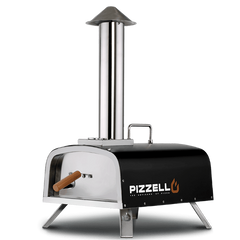
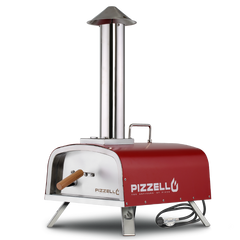
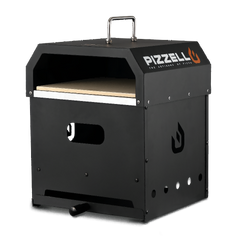
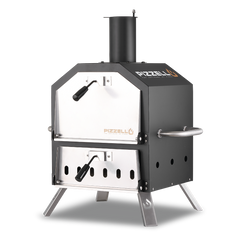



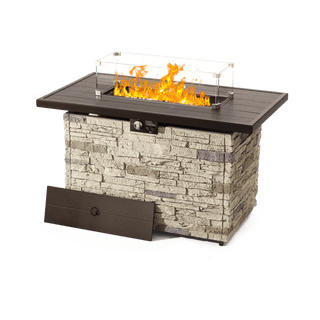
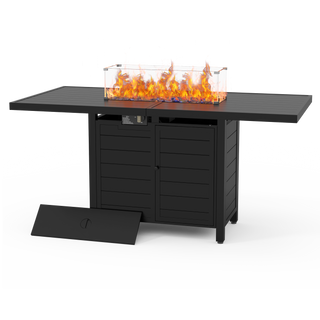
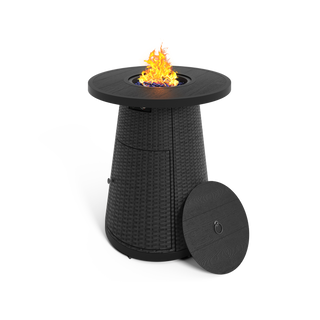

 Aluminum Dining Table
Aluminum Dining Table
 WPC Dining Table
WPC Dining Table
 Cart
Cart
 Gas Burner
Gas Burner
 Pizza Oven Door
Pizza Oven Door
 Hat
Hat
 Apron
Apron
 Swivel Rocker Set
Swivel Rocker Set
 Textilene Chairs
Textilene Chairs
 HDPE Chairs
HDPE Chairs
 Wicker Counter Height Barstools
Wicker Counter Height Barstools
 Metal Counter Height Barstools
Metal Counter Height Barstools

























